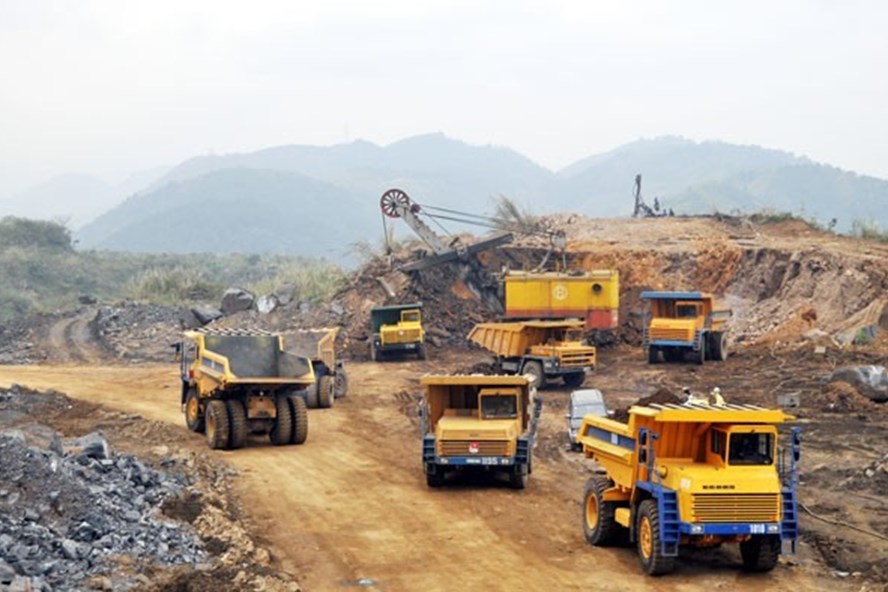5 Requirements for sampling in mineral exploration in Vietnam from February 15, 2016
Circular 74/2015/TT-BTNMT stipulating the exploration, classification of reserves and resources of Apatite minerals was issued by the Ministry of Natural Resources and Environment of Vietnam on December 28, 2015.

5 Requirements for sampling in mineral exploration in Vietnam from February 15, 2016 - Illustrative Image
According to Article 14 of Circular 74/2015/TT-BTNMT stipulating the requirements for sampling during ore exploration as follows:
-
Exploration works encountering ore must be sampled in detail and systematically to evaluate the quality of apatite ore and the associated beneficial constituents. The sampling location and characteristics must be detailed in the original documents. The types and quantities of samples taken must conform to the exploration objectives and must be specified in the exploration project.
-
Basic chemical samples must be taken in works encountering ore. Depending on the variation of the ore body, samples are taken continuously across the entire thickness of the ore body, and some samples must be taken from the pillar rock and wall rock layers, with spacing equal to the thickness of the interstitial rock layers within the ore body. At mining works and outcrops encountering ore, samples are taken using the trench sampling method, depending on the uniformity of the ore; the cross-sectional area of the sample trench varies within a rectangular range with a width from 5cm to 10cm and a depth from 3cm to 5cm. The length of the basic sample is determined by the structure, thickness, quality, and homogeneity of the ore body; for thin ore bodies with heterogeneous structures and compositions, the length of a single sample is from 0.5m to 1.0m, with a maximum length up to 2.0m; for thick ore bodies with relatively homogeneous structures and compositions, the length of a single sample is from 1m to 2m, with a maximum length up to 3m. In drilling works, samples are taken by splitting the core along its axis, taking one-half and storing one-half in the sample tray.
-
Comprehensive chemical samples must be taken for each ore body and natural ore type by grouping basic chemical samples collected from exploration works according to a uniformly distributed exploration grid across the entire mine.
-
Technological testing samples must be representative of the chemical composition, minerals, physical-mechanical properties, granularity, and other properties corresponding to the average composition of each type of ore, main ore bodies in the mine. The sample mass is agreed upon with the testing agency.
-
Bulk density samples are taken with a mass from 3 to 5 samples for each type of natural ore. Along with each bulk density sample, from 3 to 4 small density samples must be taken simultaneously for analytical comparison and verification. The volume of each bulk density sample ranges from 0.5m3 to 1m3. The loose expansion coefficient must be determined simultaneously with the bulk density samples. For massive ores, the ore density is mainly determined by small density samples and verified by bulk density samples. For loose, cracked ores and porous ores, the ore density is determined by bulk density samples; along with determining the density, the moisture content of the ore must be determined.
For detailed documents, see Circular 74/2015/TT-BTNMT, effective from February 15, 2016.
Le Vy
- Number of deputy directors of departments in Vietnam in accordance with Decree 45/2025/ND-CP
- Cases ineligible for pardon in Vietnam in 2025
- Decree 50/2025 amending Decree 151/2017 on the management of public assets in Vietnam
- Circular 07/2025 amending Circular 02/2022 on the Law on Environmental Protection in Vietnam
- Adjustment to the organizational structure of the Ministry of Health of Vietnam: Certain agencies are no longer listed in the organizational structure
- Vietnam aims to welcome 22-23 million international tourists in Vietnam in 2025
-

- Notable new policies of Vietnam effective as of ...
- 16:26, 11/04/2025
-
.Medium.png)
- Notable documents of Vietnam in the previous week ...
- 16:21, 11/04/2025
-
.Medium.png)
- Notable documents of Vietnam in the previous week ...
- 16:11, 02/04/2025
-
.Medium.png)
- Notable new policies of Vietnam to be effective ...
- 16:04, 02/04/2025
-
.Medium.png)
- Notable new policies of Vietnam effective from ...
- 14:51, 21/03/2025
 Article table of contents
Article table of contents
